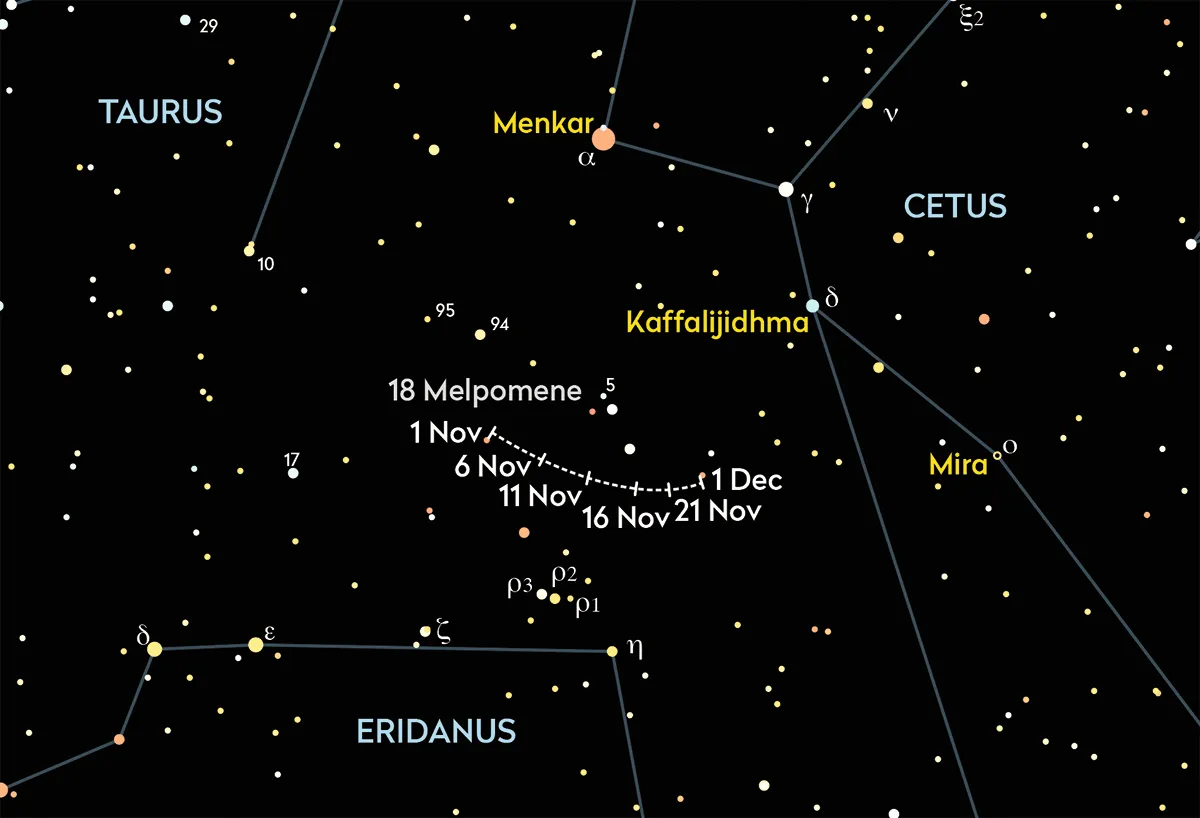Minor planet 18 Melpomene reaches opposition on 5 November when it can be found in the northwest corner of Eridanus, the River, shining at mag. +8.2.
At this brightness, it’s within binocular range and as it doesn’t move an enormous distance throughout the month, it should be relatively easy to keep tabs on.
Locating Melpomene from Eridanus will be a tricky task as the constellation is long, sprawling and mostly faint.
If you do try, Melpomene’s short November track describes a south-pointing arc between the three stars Rho1 (ρ1), Rho2 (ρ2) and Rho3 (ρ3) Eridani and 5 Eridani.
An easier method of location may be, at the start of November, to extend the line from Lambda (λ) Ceti and Menkar (Alpha (α) Ceti) for 1.4 times.
Find out what comets and asteroids are in the sky tonight

Facts about asteroid 18 Melpomene
Melpomene is a large main-belt asteroid that fits within a tri-axial ellipsoid measuring 170 x 155 x 129km.
Its orbit brings it as close as 268.5 million km (1.8 AU) from the Sun at perihelion and out as far as 418.4 million km (2.8 AU) at aphelion.
It takes 1,270.6 days (3.5 years) to complete each orbit.
Melpomene is an S-type, silicaceous asteroid with a stony composition.
Melpomene is relatively bright and varies in magnitude between +7.5 at favourable oppositions and +12.0 at unfavourable ones.
During 2023 it’s closer to the favourable end of this range, starting the month at mag. +8.2, maintaining +8.2 at opposition and ending it at mag. +8.7.
Melpomene was discovered by English astronomer John Russell Hind on 24 June 1852.
Following the occultation of a star on 11 December 1978, it was believed to have its own moon.
Follow-up observations by the Hubble Space Telescope in 1993 revealed the asteroid’s elongated shape, but failed to detect the suspected moon.
Thus it seems Melpomene is alone.
This guide originally appeared in the November 2023 issue of BBC Sky at Night Magazine.

